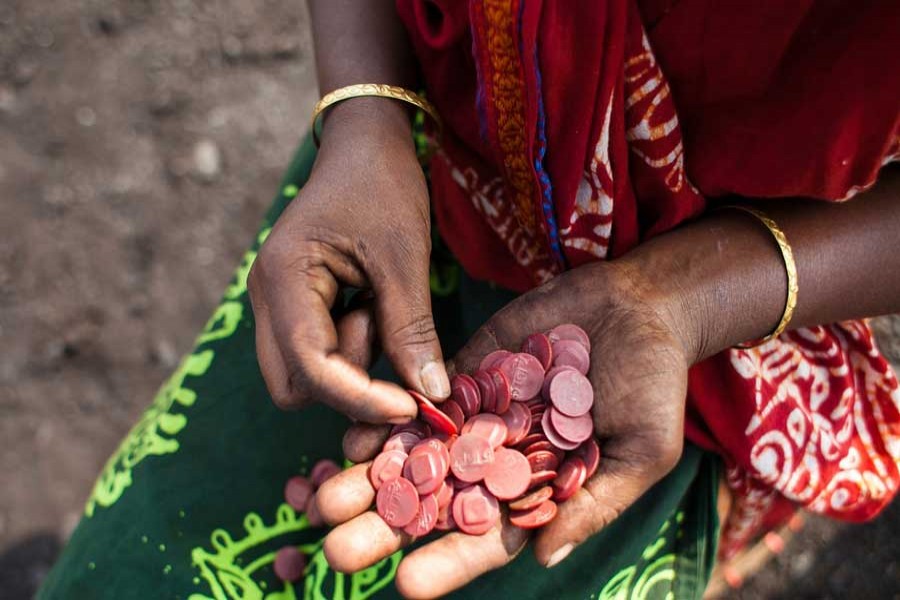A regulatory move to expand microcredit operations through 37 poorer districts looks frustrated, primarily as newly licensed NGOs-MFIs couldn't deliver, sources said.
The microcredit regulatory authority (MRA) took the initiative in 2011 in view of the fact that operations of large non-governmental organisations (NGOs) and micro-finance institutions (MFIs) are largely concentrated in few districts dominantly.
According to recent mapping of microfinance-access points in the country, half of the MFIs' branches are running their operations in around 18 districts only, which, mostly, have comparatively less poverty rate.
According to World Bank Bangladesh interactive poverty maps, poverty-headcount ratio in Kurigram district is 64 per cent while the district has 190 branches of MFIs.
On the other hand, poverty-headcount ratio in Noakhali is 10 per cent only while MFI branches in the district number 330.
The population in Noakhali is 298,543 while Kurigram has four times as many, numbering 1,318,577.
Insiders said the government should take special funding programme for the MFIs who are interested to work in the remotest and poverty-stricken areas.
They said some of big players in microcredit turf are reluctant to take new challenges in those areas leaving their comfort zones in wealthier pockets.
According to MRA annual report 2016, some 10 NGO-MFI kingpins share 72 per cent of microcredit market while the number of organisations is around 700.
There are 16,434 MFI branches spread across the country. Of them, 8,449 branches are in Dhaka, Chittagong, Noakhali, Comilla, Gazipur, Tangail, Bogra, Narayanganj, Jessore, Khulna, Mymensingh, Sirajganj, Rangpur, Dinajpur, Kusthia, Pabna, Rajshahi and Naogaon.
These districts have more than 300 branches each, according to the MRA mapping.
The rest 46 districts have less than 300 branches each. The least number of district-wise branches is 24 in Bandarban hill district while the highest 1,041 in Dhaka, wherein lies Bangladesh's capital.
The microfinance regulator invited applications on November 16, 2011 from interested organisations to run microcredit operations in 37 relatively less-developed districts.
The less-fortunate districts selected are Barisal, Jamalpur, Khagrachhari, Bhola, Mymensingh, Barguna, Khulna, Sherpur, Bagerhat, Jhalakathi, Habiganj, Bandarban, Sirajganj, Sunamganj, Satkhira, Patuakhali, Rangamati, Lalmonirhat, Jessore, Kurigram, Brahmanbaria, Rangpur, Chuadanga, Nilphamari, Natore, Cox's Bazar, Gopalganj, Faridpur, Netrakona, Comilla, Kishoreganj, Rajbari, Bogra, Noakhali, Chapainawabganj, Madaripur and Thakurgaon.
The MRA has marked out the areas to avoid the overlapping of small lending-borrowing services and also to help meet government goals of poverty reduction.
The purpose was also to help develop the poverty situation in inaccessible areas like haor-baor, coastal or hilly areas.
In 2013, the microcredit regulator made 'primary selection' of 700 NGOs for micro-lending operations from among 1,212 interested NGO-MFIs.
Later, the MRA awarded licenses to 208 organisations for three years primarily.
But, until Thursday last, only 24 organisations were able to get permanent licence despite a very easy set of conditions for them.
MRA Director Abdul Haque said most of these new NGOs are not qualified for running such financial operations.
"Maximum 100 MFIs could secure permanent licence if MRA went easy--this is disappointing," he said.
Chairman of Credit and Development Forum (CDF) Emranul Haque Chowdhury said the government must take special programmes for special areas.
"The government has the capacity to provide low-interest funds for the special kind of microcredit," he argued.
Executive Director of CDF Md Abdul Awal said this paradox is really interesting.
He thinks bigger NGO-MFIs do not want to go to new and challenging areas leaving their comfort zones already established by them.
"That is why bigger number of MFIs is working in lesser poverty-stricken areas," he said. He also said MRA should set conditions easier for newly licensed MFIs and may provide special assistance so that NGOs get interest to work in those under-privileged areas.

- Friday, 7 March 2025 |
- Today's FE |
- e-Paper |
- Beta Website

